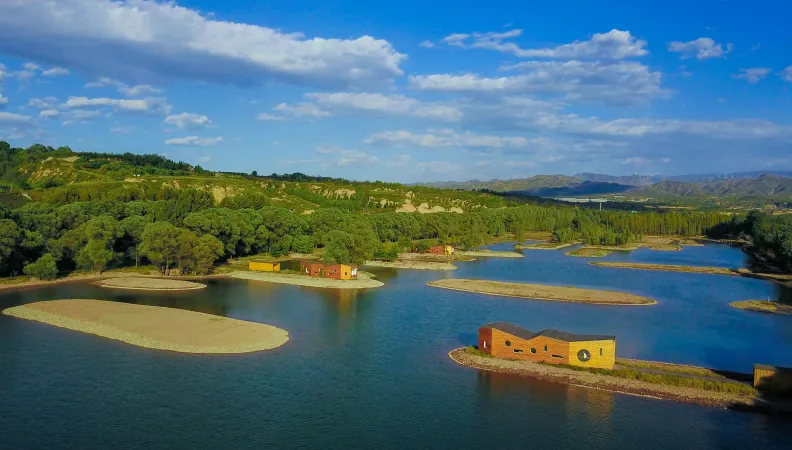Share the page
Restoring Qixian wetlands with nature-based solutions
Project


-
Project start date
-
Status
Ongoing
-
Project duration
-
20 years
-
AFD financing amount
-
30000000 €
-
Country and region
-
Location
-
Qixian, Shanxi
-
Type of financing
-
Beneficiaries
-
Qixian local authorities
The Changyuan River restoration project in Shanxi province relies on nature-based solutions to restore essential ecological heritage and increase the capacity of local ecosystems to adapt to climate change. The project offers a model for preserving wetlands in arid or semi-arid climates around the world.
Context
Changyuan River Wetland Natural Park, located on the border of the Loess Plateau, is home to 900 hectares of remarkable biodiversity, including several endangered bird species. The park offers extremely valuable freshwater resources in the middle of Loess Plateau, one of the planet’s driest and most eroded regions. The Changyuan River used to have a permanent riverbed, constantly filled with water. Little by little the river deteriorated, leading to the disappearance of the majority of the wetlands.
In 2015, an ambitious project supported by AFD was launched to support the park’s ecological and hydrological restoration, protect threatened species, and support economic development through ecotourism.
Description
The project implemented innovative solutions, with the goal of restoring nature through nature-based solutions. It included four components:
-
Wetland restoration and species conservation: restoration of 11.5 km of permanent riverbed, creation of a bird sanctuary and fifty bird islands, riverbank renaturalization and reintroduction of local plants that had disappeared;
-
Development of ecotourism, including the creation of an ecomuseum, a 20-hectare botanical garden within the park, and a bird sanctuary;
-
Waste, wastewater and energy management: creation of a biogas plant fed with local biomass, a 2-hectare filtering garden to treat 10,000 m3 of wastewater per day;
-
Local capacity-building initiatives for sustainable park management.
Impacts
The wetland ecosystem has been completely restored. The maximum number of bird species observed per day rose from 163 at the start of the project to 222. The number of protected black storks observed per day rose from 3 to 19. Local communities benefit from improved living conditions thanks to effective sanitation solutions and alternative job opportunities. Finally, the project has served to disseminate good practices for managing the fragile ecosystems of the Loess Plateau among the Chinese partners.


